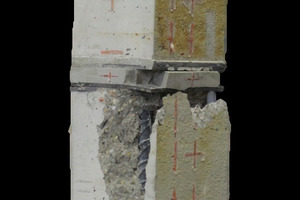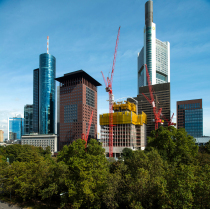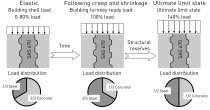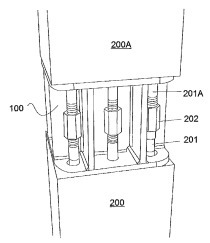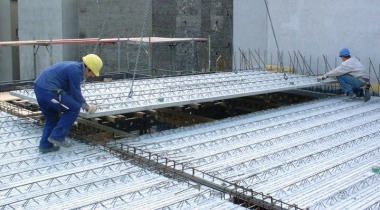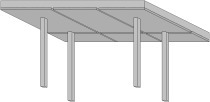Butt joints in highly reinforced precast concrete columns
The advantages of precast concrete elements known from industrial construction can also be successfully used in high-rise buildings. Completed projects such as the “Tanzende Türme” in Hamburg or the “Taunusturm” in Frankfurt show that prefabrication not only enables an accelerated construction progress, but also high quality and economic efficiency. However, special attention must be paid on the joints of precast columns. While the butt joints have to transmit high normal forces reliably, they also represent a sophisticated region of discontinuity that may result in a reduced ultimate load of the columns.
The load-bearing behaviour of butt-jointed prefabricated columns has been a matter of research since the 1960s. However, there is a lack of investigation concerning increasingly used highly reinforced concrete columns. Therefore, this contribution presents new experimental investigations on butt-jointed reinforced concrete columns with high reinforcement ratios and large bar diameters. In total, seven large-scale component tests were carried out at iBMB, Division of Concrete Construction of TU Braunschweig showing a reduction of the ultimate load with increased reinforcement ratios. With the help of a parameterised 3D FE model for the simulation of the stress and strain distribution in butt joints, parameter studies on the influence of various design parameters (longitudinal reinforcement ratio, mortar and steel plate thickness, etc.) on the ultimate load of butt joints could be carried out.
Based on these experimental and numerical results, existing rules and proposals for butt joints are analysed and evaluated. A load factor concept is introduced quantifying the influence of the butt joint design on the load-bearing capacity of precast columns and thus contributes to safe design of butt joints in precast columns.

